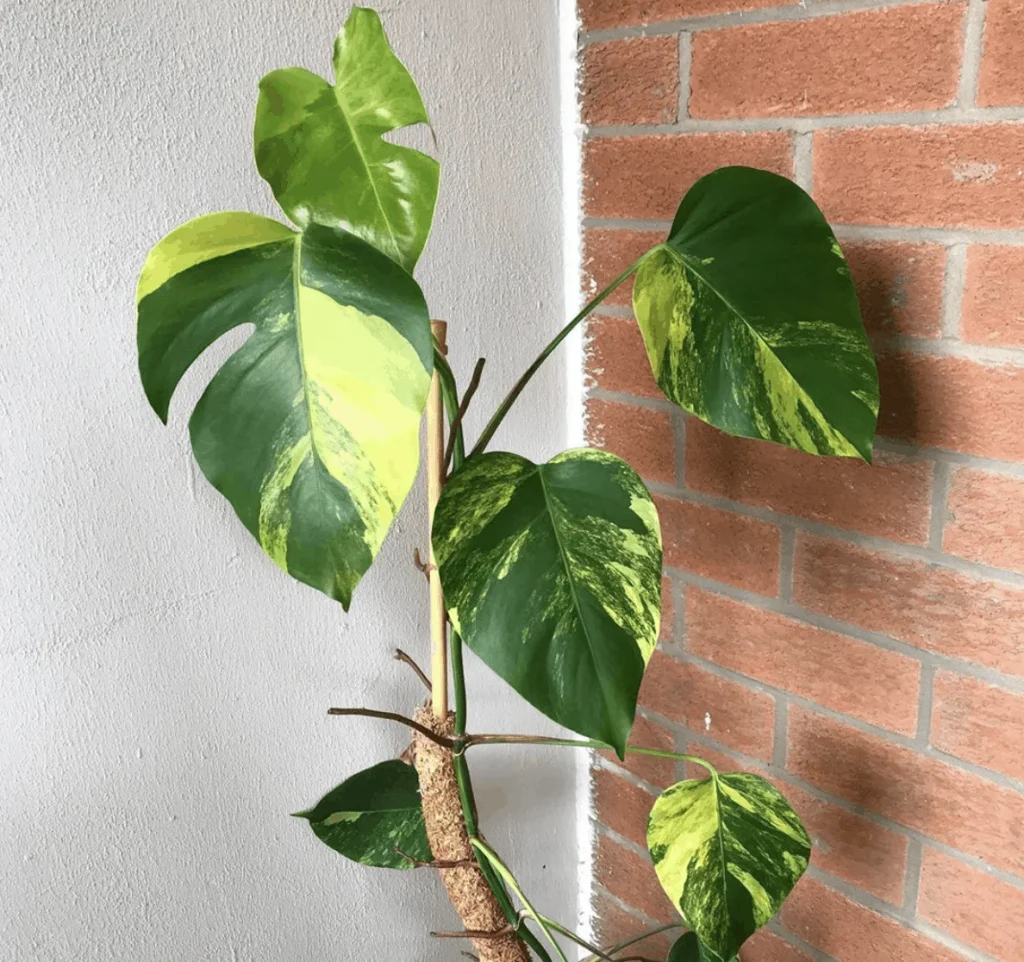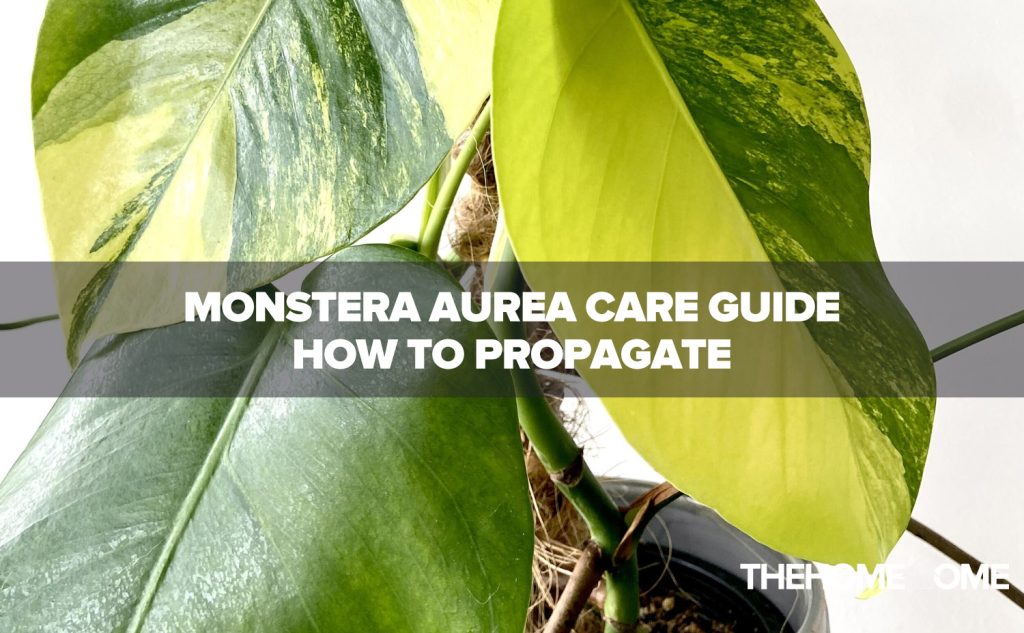Most houseplant enthusiasts consider Monstera aurea an endearing plant due to its beautiful splits.
Although this plant variety is rare and pricey, its complementary effect on your home is worth it. Its distinctive yellow variegations on its large split leaves have made it a popular houseplant for both indoor and outdoor propagation.
The Monstera Aurea is low maintenance and easy-to-propagate specie. The propagation methods for the Monstera Aurea are beginner-friendly, and with proper care, the plant will thrive. The plant problems associated with this specie can easily be prevented.
This article provides everything you need to know about propagating Monstera aurea, nurturing them, and tips that would enable you to enjoy a stress-free propagation experience. We also included information about the plant problems associated with Monstera aurea: how to identify them, their causes, and solutions.
Monstera Aurea Plant Profile
This is the plant profile of the Monstera Aurea looks like.
| Botanical name | Monstera Aurea |
|---|---|
| Other names | Monstera Borsiginia, Monstera Aurea Marmorata, Marmota Delicosa Aurea |
| Origin | Southern Mexico, South Panama |
| Family | Araceae |
| Light | Bright indirect light |
| Watering | Moderate watering |
| Temperature | 60°F-80°F |
| Plant Feature | Split leaves |
| Toxicity | Toxic to pets and humans |
| Propagation Style | Indoor and Outdoor propagation |
| Plant size | Height: 10-15 ft.Width: 8 ft. |
| Food | Balanced Liquid Fertilizer |
| Humidity | Low humidity |
| Foliage color | Green and Yellow |
| Susceptible Plant Issues | Root rot, Wilting leaves, Sparse growth, Yellow/ Brown / Dried Leaves, and Pest Infestations. |
Propagation of Monstera Aurea
The Monstera Aurea is a low-maintenance plant that requires basic growth needs to survive. It is also a beginner-friendly house plant. We have provided you with the propagation methods for your Monstera Aurea. For beginners, we recommend using stem cutting in the soil to propagate your Monstera Aurea. Everything you will need to propagate your Monstera Aurea is listed below:
- The mother plant of Monstera Aurea is
- Organic soil
- Hand pruners
- Grafting knife
- Container or pot.
- Dibble
- Water
The methods for propagating Monstera aurea are these:
1. Stem Cutting in The Soil
These are the steps for propagating Monstera Aurea using the soil propagation method:
- Step 1: Pour your organic soil into a well-drilled container. Water it thoroughly till the water drains through it.
- Step 2: Select a healthy node with at least two nodes. Ensure you cut below the node. Each cutting should have at least 2 leaves along the stem.
- Step 3: Apply your rooting hormone to the base of the stem (optional).
- Step 4: Using a dribble, make a hole in your potting mix and securely insert your cutting. Ensure the soil holds your cutting firm till it stands upright.
- Step 5: Mist the plant.
- Step 6: Place the container in an area where it can receive bright indirect light.
Healthy roots should form in 4 months with proper care and attention and be ready for transplanting. Make sure the plant gets enough water. During this time, avoid using fertilizer. Gently tug the plant to test how firm the roots are to see if your Monstera Aurea has fully matured.

2. Stem Cutting in Water
To propagate Monstera aurea using the water propagation method, follow these steps:
- Step 1: Using a clean pair of scissors, select and cut a healthy stem with at least two nodes. Ensure you cut below the node. Each cutting should have at least 3 leaves along the stem.
- Step 2: Place the cutting in a clean glass jar.
- Step 3: Place the plant in a location where it can receive bright, indirect light.
- Step 4: Change the water every 3-5 days.
These are common water propagation mistakes you should avoid:
- Never neglect to change the water.
- Don’t submerge the plant in water as it can lead to root rot.
- Always check for mosquito larvae as water is their habitat.
- If you are not familiar with this propagation method, use stem cutting in soil instead.
- Be patient with your Monstera Aurea. Do not take the plant out too early or too late.
With proper care, your Monstera Aurea should start developing roots after 4 weeks.
Monstera Aurea Care Guide
These are the growth needs the Monstera Aurea requires to thrive:
1. Well-drilled Container
A well-drilled container is an ideal container for your Monstera Aurea. Root rot, which is primarily caused by overwatering, is one of the most common plant problems that gardeners face. Overwatering is frequently caused by the use of a container that does not allow for proper water drainage.
2. Organic Soil
Organic soil contains natural nutrients essential to the proper growth of your plant. Adding compost, aged manure, mulch, and peat moss can increase the organic matter in your potting mix. Never use fresh animal manure because it can be acidic and too concentrated for your Monstera Aurea.
3. Adequate Light
The provision of adequate light for your plant is vital to the growth of your Monstera Aurea. You should place your Monstera Aurea in a location where it can receive bright indirect light. Exposure to improper light inhibits the growth of your Monstera Aurea.
4. Proper Temperature And Humidity
The Monstera Aurea should be grown in an area with low humidity and warm temperature. Extreme weather conditions, whether hot or cold, can create growth challenges for your Monstera Aurea. You can improve the humidity level for your plants by regularly misting the leaves or using a humidifier.
For outdoor propagation, grow your plant amidst other plants, as this can help provide the adequate level of humidity needed to thrive.
5. Periodic Fertilization
Proper and periodic fertilization can enhance and sustain the growth of your plant. Use a liquid-based or balanced granular fertilizer for your Monstera aurea. The frequency of application depends on the product. We recommend that you carefully read and follow the label directions before applying.
6. Regular Pruning
Regular pruning helps get rid of damaged and dead plants. Periodic pruning is necessary because it allows the growth of new and healthier leaves. Pruning helps curtail the spread of pest diseases. In addition, pruning keeps your plants attractive. You should prune your Monstera aurea when you notice a large number of leaves, damaged, dead, or diseased leaves.
7. Pest-Free Environment
Providing a pest-free environment is important for your Monstera Aurea. A pest infestation can hinder the proper growth of your plants and ultimately destroy them. You should regularly check for signs of pest attacks in order to combat them immediately. Keeping your home clutter-free is a good way to prevent pest infestation.
Monstera Aurea Plant Problems And How to Fix Them
This table offers information on the major plant challenges Monstera Aurea growers are likely to face during their propagation and nurturing experience.
| Plant Problem | Signs | Causes | Solution |
|---|---|---|---|
| Root rot | Slow growth. Yellowing leaves. Wilting leaves. Mushy stems. Black spots on the leaves. Unpleasant odor from the roots. | Overwatering. Underwatering. Application of harsh chemicals such as pesticides and fertilizers. | Remove rotted stems with sterilized scissors. Dip the healthy roots into a mixture of hydrogen peroxide and water to remove bacteria. Repot the plant with fresh soil. Avoid overwatering or underwatering. |
| Drooping leaves | Limp leaves | Underwatering Uneven watering Overwatering Exposure to direct heat | Water the plant frequently but moderately. The Monstera Aurea should be watered at least once a week. Water the plant thoroughly. When watering, your soil must never end up waterlogged. Use a moisture gauge before watering. Place your plant in a shaded location where it can receive bright indirect sunlight. |
| Discoloration (Yellow/ Brown leaves) | Leaves turn yellow or brown at the tip. | Natural aging Pest attacks Transplant shock Overfertilization Extreme weather Direct exposure to sunlight. | No solution for aging plants. You only need to tend to its major growth needs. Separate infested plants from healthy plants and combat infestation with pesticides. Repot the plant carefully and place it in a shaded location. If the soil is not damaged, avoid fertilizing for a while. If damaged, repot the plant to give it a fresh start. Place the plant in a location with low humidity and warm temperature. Place the plant in a shaded location |
| Sparse Growth | Scanty leaves Leggy plants | Root rot Soil deficiency Inadequate light | Repot the plant. Avoid under or overwatering, or overfertilizing the plant. Use organic soil mix for your plant and fertilize periodically. Place the plant in a location where it can receive bright indirect light. Never place the plant in a dark location. |
| Curling leaves | Leaves curl at the tip | Pest infestation | Combat pest attacks immediately with pesticides. |
| Pest infestation | The appearance of a large number of pests on your plant | Yellow leaves Sparse growth | Separate the infected plant from the healthy ones and treat them with mild pesticides. |
How To Prevent Monstera Aurea Plant Problems
Root rot can be prevented by adopting a moderate watering schedule that caters to the watering needs of your Monstera Aurea. Periodic fertilization also helps reduce the likelihood of root rot.
Adequate watering prevents drooping or wilting leaves. When watering your plant, rotate the container to ensure even watering for all parts of the plant.
Changes in foliage appearance can be avoided if your Monstera Aurea is placed in a shaded location, especially when grown outdoors. They can be grown amidst other trees and plants so they can receive bright but indirect sunlight. Periodic fertilization and proper transplanting measures can reduce the effect of transplant shock on your Monstera Aurea.
Pest infestations can be prevented or controlled by using sterilized equipment for pruning. Separating infested plants from healthy plants controls the spread of a pest attack. In addition, spraying your Monstera Aurea regularly with water wades off pests.
Pest attacks can be easily prevented by regularly spraying your leaves with water and treating your Monstera Aurea with mild pesticides. Sterilizing your pruning equipment before use prevents the transfer of pest diseases.
Growing Tips For Monstera Aurea
- Create a watering schedule that meets your plant’s watering requirements.
- Avoid fertilizing during the winter.
- Wash your pots before putting plants in them. Put your Monstera Aurea in a clean container to avoid pests.
- Use more than one propagation specimen if you are a beginner.
- Regularly prune your plants to remove dead and damaged leaves. This allows for the faster growth of new and healthier leaves.
- Once you notice a slight change in the foliage color and appearance of your Monstera Aurea, attempt to identify what you may be doing wrong so you can make the necessary changes immediately.
- Regularly mist the leaves to improve humidity or use a humidifier.
- Never ignore pest problems.
- Quarantine any new plant you bring home to prevent the spread of pests.
Frequently Asked Questions
Why is Monstera Aurea so Expensive?
What Is The Difference Between Monstera Aurea And Monstera Delicosa?
Conclusion
If you are a beginner or have a hectic schedule, Monstera aurea is one of the best houseplants to propagate. Except before it is transplanted, this plant does not require 24-hour supervision to grow.
Despite the fact that it is a low-maintenance plant, we recommend that you not neglect it.
More houseplant care guides:
